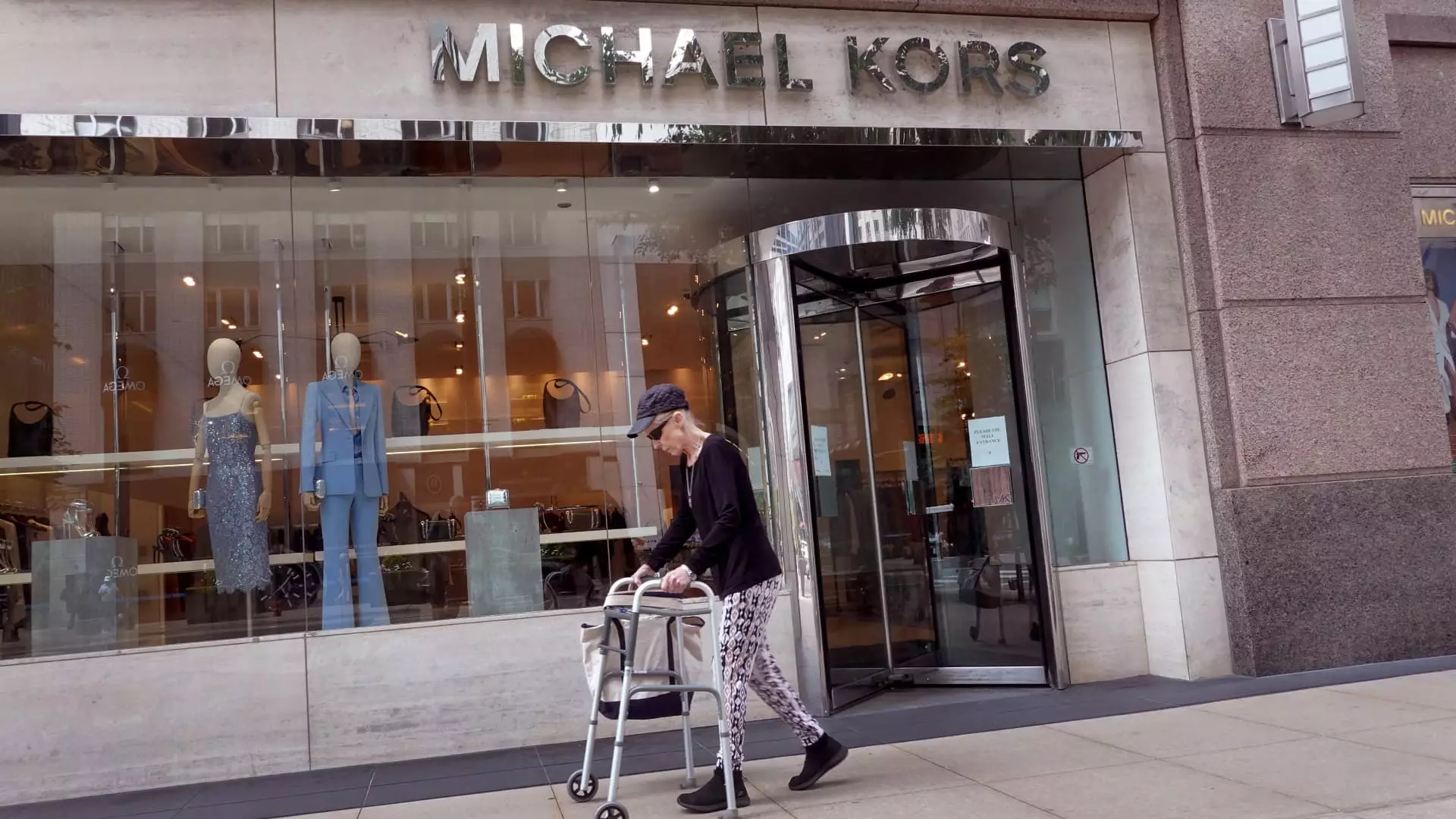The anticipated merger between luxury fashion giants Capri Holdings and Tapestry has been officially called off, marking a significant turn in the business landscape of high-end retail. The decision came after the Federal Trade Commission (FTC) initiated a lawsuit aiming to halt the merger, asserting that it would be detrimental to both consumers and employees of the involved companies. This unexpected twist not only signals the end of what would have been an $8.5 billion acquisition but also poses essential questions regarding the future of both Tapestry and Capri.
Capri and Tapestry announced their mutual decision to terminate the merger, emphasizing that it was in both parties’ best interests to withdraw given the slim chances of obtaining the necessary regulatory approval before the looming expiration date in February. Capri’s CEO, John Idol, expressed optimism about the company’s future without the merger, highlighting the strength and growth potential of Capri’s three luxury brands: Versace, Jimmy Choo, and Michael Kors. The notion of focusing inward rather than on the complexities of a merger is a pragmatic approach, especially in light of the increasing scrutiny surrounding such large-scale mergers and acquisitions.
The FTC’s intervention serves as a potent reminder of the rigorous regulatory landscape that businesses must navigate when contemplating mergers. By arguing that the merger would disadvantage consumers and diminish employee benefits, the FTC signaled a broader commitment to preventing oligopolistic market structures that could harm competition. This decision was supported by a subsequent ruling from a federal judge, who issued a preliminary injunction against the merger, thus reinforcing the FTC’s position. Tapestry’s attempt to maneuver around the ruling by appealing it reflects a desperate attempt to salvage the deal, but ultimately, the regulatory hurdles proved insurmountable.
In the wake of the merger’s collapse, the financial markets reacted predictably yet starkly. Tapestry saw an uptick in its stock price—about 10% post-judge ruling and another 6% in premarket trading following the termination announcement. Conversely, Capri Holdings experienced a dramatic decline, with shares plummeting nearly 50% shortly after the judicial ruling. These contrasting reactions indicate a clear market sentiment: Tapestry is perceived as the more stable entity, capable of thriving independently. This shift in investor confidence raises questions about Capri’s strategy moving forward, especially regarding its flagship Michael Kors brand, which has seen diminishing sales in recent years.
With the merger off the table, both companies are pivoting toward their individual growth strategies. Tapestry has propelled itself into a position of financial strength, announcing plans for a $2 billion stock repurchase program as part of its forward strategy. This proactive approach signals confidence in its independent path forward. Tapestry’s CEO, Joanne Crevoiserat, articulated a commitment to rapid growth with a focus on organic business developments, which aligns with contemporary market trends where consumer preferences shift toward authentic and unique brand experiences.
At the same time, Capri is reevaluating its trajectory as it seeks to stabilize and reinvigorate its brands. CEO John Idol’s announcement about strategic initiatives aimed at enhancing brand desirability emphasizes an essential understanding of consumer behaviors in the luxury sector. By concentrating on compelling product offerings and improving the omnichannel consumer experience, Capri seeks to redefine its market position during an era fraught with challenges.
The dissolution of the Capri-Tapestry merger serves as a lesson in the complexities of corporate strategy in the luxury retail sector. While the immediate fallout appears challenging for Capri, it holds potential if it can effectively leverage its existing brand portfolio and restore consumer confidence. As both companies refine their strategies in the face of modern market demands, the long-term implications of this decision will undoubtedly shape their respective paths in the competitive luxury landscape. Industry stakeholders will be keenly observing how each company navigates its post-merger landscape and what new models of growth they will adopt in an ever-evolving market.


Leave a Reply